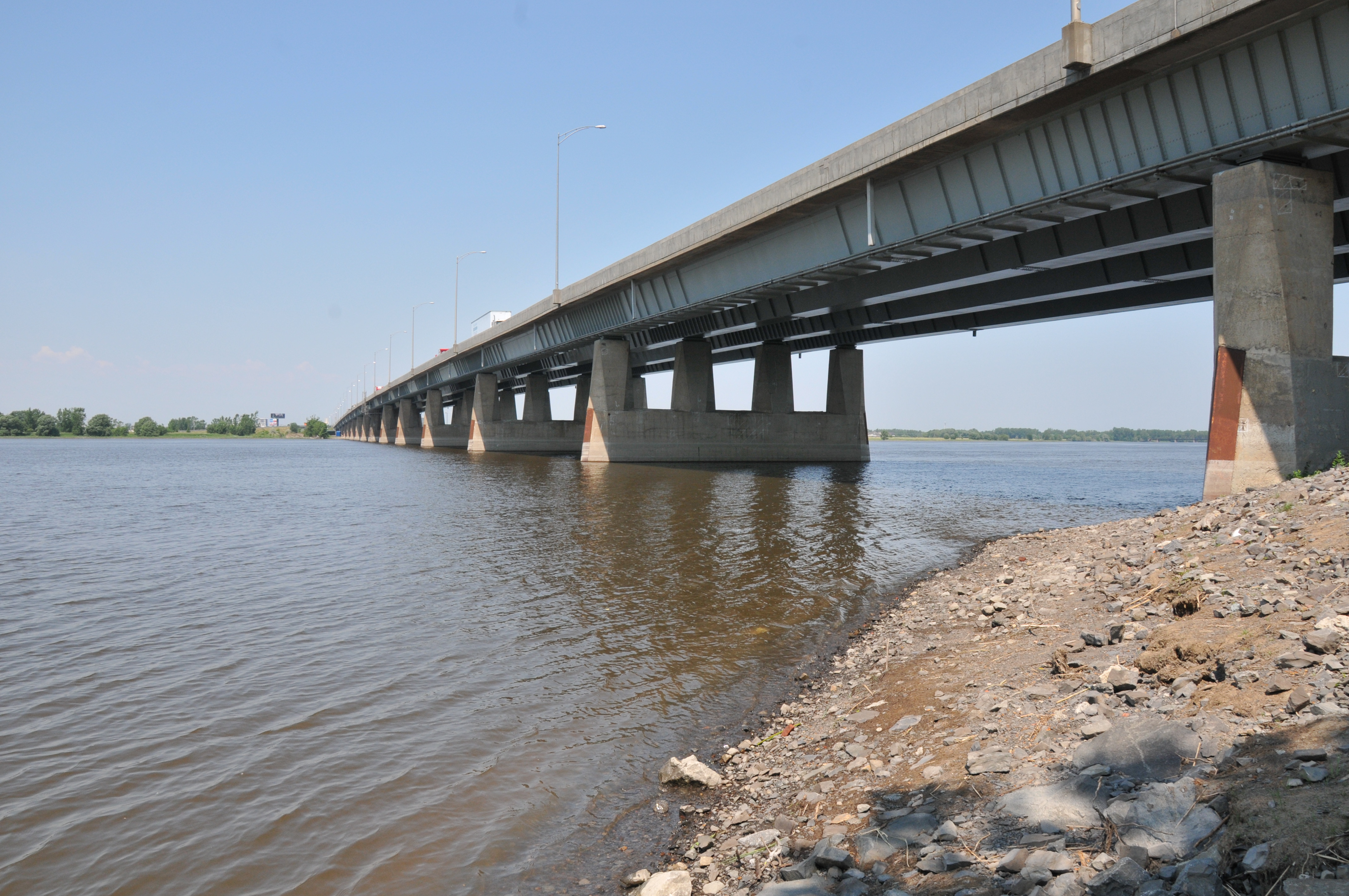
There are eight main bridges that connect to the island of Montreal. These structures hover over the Saint Lawrence River, easing the flow of traffic between boroughs.
And while these bridges are not something you necessarily think about unless you’re driving on them, they are full of history and act as symbols of Montreal’s ingenuity and cultural identity.
Here are eight facts you may not have known about bridges across the city.
- You might also like:
- Pillars of history: Here are the oldest churches in Montreal
- Curd quiz: Can you pass this eight-question poutine test?
So, the next time you’re stuck in traffic, you’ll have something to think about.
The Victoria Bridge was once the longest in the world

Rocky33/Shutterstock
Victoria is Montreal’s oldest bridge. At 2.7 kilometres, it was also the longest bridge in the world at the time of its inauguration in 1859.
The Samuel de Champlain Bridge is the widest cable-stayed bridge in the world

Pascal Guay/Shutterstock
At 60 metres wide, the new Champlain bridge, which connects Montreal to the South Shore, is the widest cable-stayed bridge in the world that uses two planes of cable.
The Jacques Cartier Bridge was originally called the Harbour Bridge

Shutterstock
Montreal’s Harbour Bridge was inaugurated in 1930. It was renamed the “Jacques Cartier Bridge” in 1934, following a petition to honour the French explorer who mapped the St. Lawrence River valley in 1534.
There is a small homage to Paris in the Cartier’s design

Shutterstock
If you look closely at the bridge’s four finials, they bear a familiar form. The turrets are shaped like the Eiffel Tower as an homage to the Parisian monument.
30 million drivers on the Mercier every year

marie-josee auclair/Shutterstock
It is estimated that an average of 75,000 vehicles use the bridge that connects LaSalle to Kahnawake each day. That is approximately 30 million vehicles every year.
The tunnel under the Louis-Hippolyte Lafontaine Bridge is the longest underwater tunnel in Canada

Héritage Montréal
Below a six-lane highway that carries over 110,000 vehicles every day, the tunnel portion of the crossing is 1.4 kilometres long.
From 1967 to 1972, the Expo Express circulated on the Concorde Bridge

Shutterstock
Built for the 1967 World Fair, the Expo Express was an automated surface metro that spanned nearly six kilometres. Before the service was ultimately disbanded in 1972, the route covered part of the Concorde Bridge.
The Charles de Gaulle Bridge got its name from the Quebec sovereignty movement

Gouvernement du Quebec
Linking the eastern tip of the island of Montreal from Rivière des Prairies to the Lanaudière region, the Charles de Gaulle Bridge was named after France’s then-president.
De Gaulle visited Montreal in 1967, famously delivering his “vive le Québec libre” speech. Construction on the bridge finished that same year.

